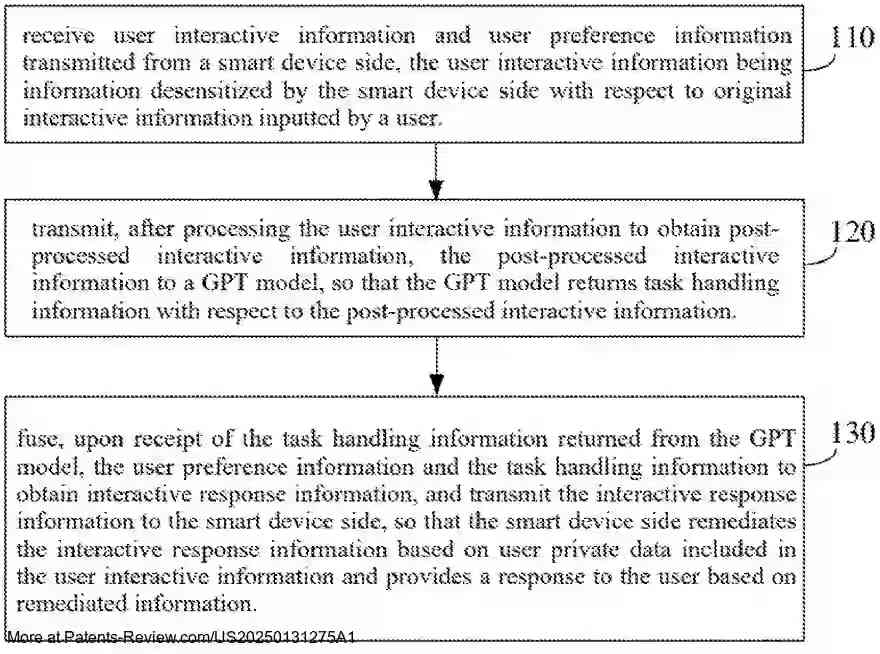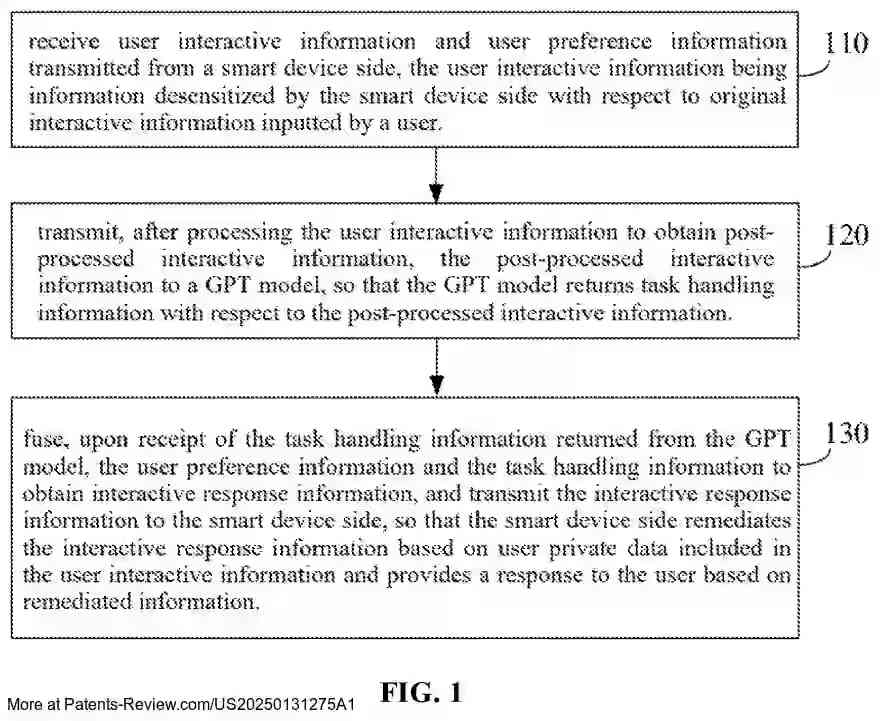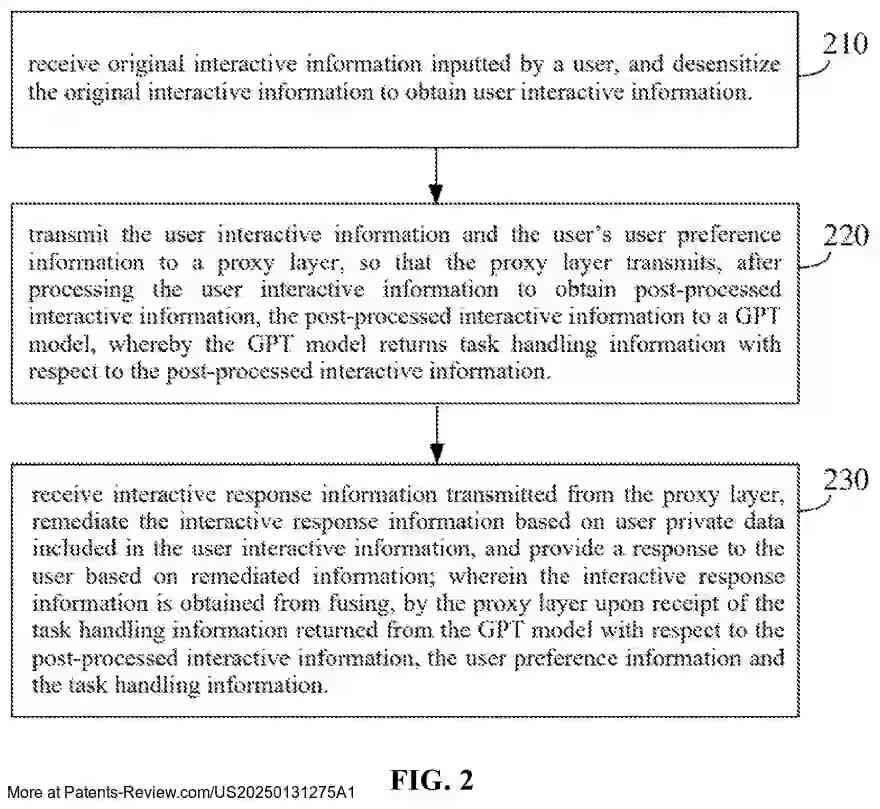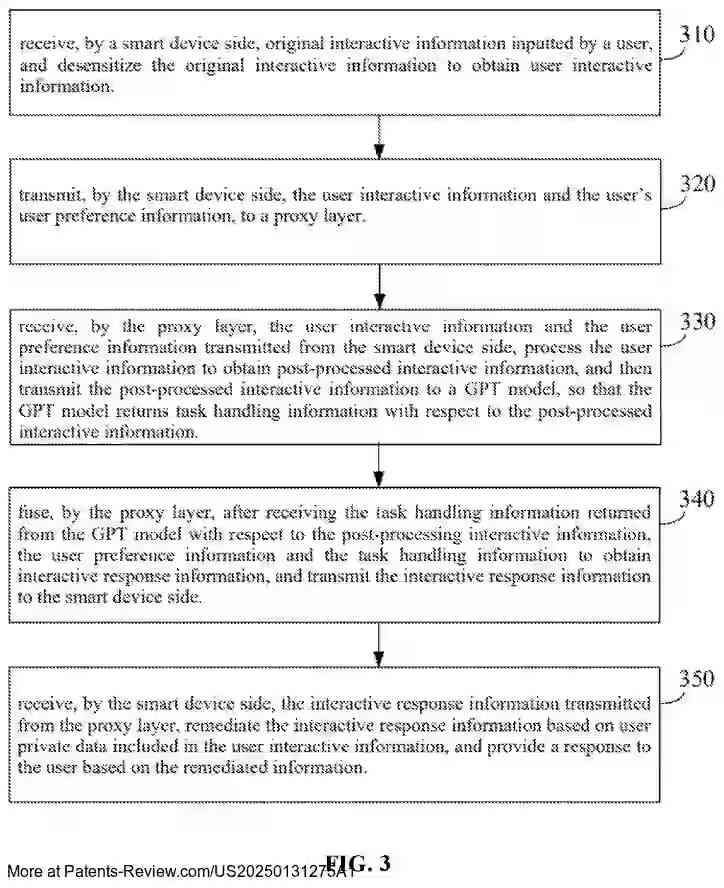GPT MODEL-BASED SMART DEVICE INTERACTION METHOD, APPARATUS, AND SYSTEM
US20250131275
2025-04-24
Physics
G06N3/09
Inventors:
Applicant:
Drawings (4 of 6)




Smart overview of the Invention
The GPT model-based smart device interaction method enhances human-computer interaction by integrating user preferences and task handling information. The approach involves receiving user interactive information, which is desensitized to protect privacy, and processing it to create post-processed interactive information. This information is then sent to a GPT model, which returns task handling details. These are combined with user preferences to generate interactive response information, which the smart device uses to provide a personalized response.
Technical Details
The process includes matching nouns in task handling information with preference labels in user preference data. This matching allows for the replacement of nouns based on preference label values, creating customized responses. The smart device further refines this information using private data before delivering the final response to the user. This ensures that the interaction is both personalized and secure.
Vectorization and Domain Knowledge
The method involves vectorizing post-processed interactive information and searching domain-specific knowledge bases to find relevant domain knowledge vectors. These vectors are fused into a query vector sent to the GPT model. The system can interact with multiple GPT models, optimizing task handling information through fusion or filtering processes before integrating it with user preferences.
Proxy Layer Implementation
A proxy layer is constructed using a finely-tuned pre-trained text generation model. It processes user inputs and interfaces with the GPT model, ensuring efficient handling of interactive data while safeguarding privacy. The proxy layer plays a crucial role in adapting the system to evolving user needs by continuously refining its interaction capabilities.
Continuous Improvement
The system collects user feedback on interactions that do not meet expectations, using this data for ongoing optimization. By recognizing user intents and associating them with domain-specific knowledge, the system enhances future interactions. This adaptive approach ensures that smart devices remain responsive to user needs, providing accurate and relevant responses over time.